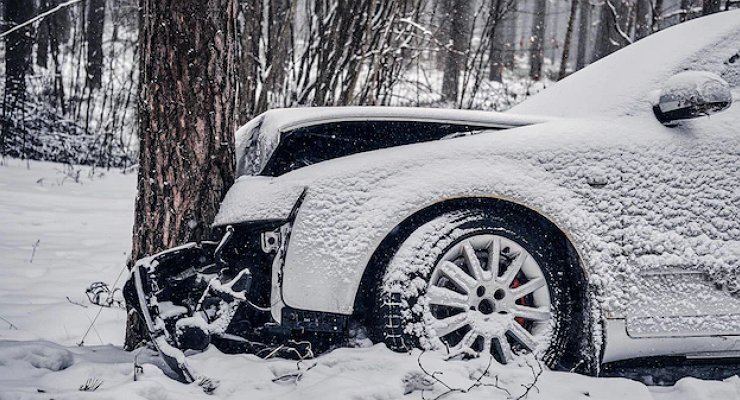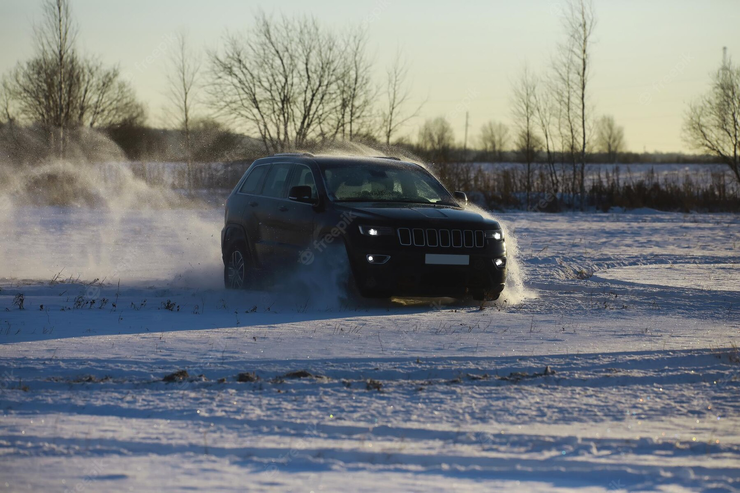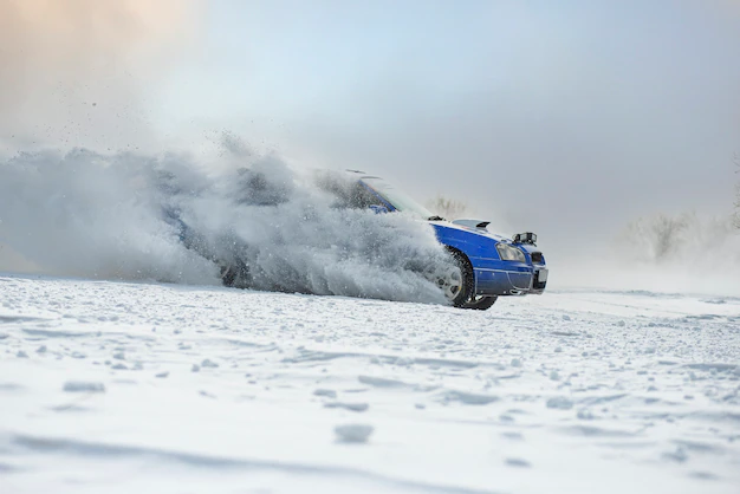In winter, the number of accidents involving four-wheel drive vehicles increases sharply. Why is this happening and what can you do to improve your safety? The problem was solved by the AvtoVzglyad portal.
As a rule, the onset of winter is accompanied by a large number of accidents. In turn, they are often caused by the fact that the speed of the vehicles does not match the road conditions. Naturally, the speed depends on the ability to accelerate quickly. Moreover, if front- and rear-wheel drive cars have limited ability to accelerate on slippery surfaces, then all-wheel drive can accelerate so well that it can even startle. In addition, the ability of four-wheel drive vehicles to actively accelerate often misleads the driver as to the current coefficient of adhesion of the wheels to the road. Why is this happening?
It’s not even that the car accelerates all four wheels. It’s just that the torque, distributed across the transmission, increases the load on the engine. This makes the car less sensitive to pressing the accelerator pedal, reducing the chance of the wheels spinning.
It can be argued that the stabilization system solves this problem. But no! It reacts only to slippage, and on ice, for example, with all-wheel drive, an active redistribution of torque between the axles and wheels first takes place. But since both the wheel drives and the wheels themselves have significant inertia, this does not happen instantly and can cause drivability problems.
Although this algorithm works well if the coefficient of adhesion of each wheel with the road is not the same. And what happens if all wheels have the same adhesion coefficient on the surface? They start churning at the same time. And here the stabilization system will “cut off” the gas and, despite the presence of all-wheel drive, you will not go anywhere at all. It is not for nothing that some four-wheel drive vehicles have the option of forcibly turning off the stabilization. But back to the situation in which you managed to actively accelerate.
As we have already noted, this can give the illusion of good traction. But it is at this time that you should pay attention to how other road users accelerate. And if you have clearly become a leader, then if you are not afraid, you need to think about what is happening. Most likely, monoprivodny guys on the road simply cannot accelerate well, because it is very slippery under the wheels. And only the presence of all-wheel drive allowed you to “shine” with your skills.
However, there is an exit or a red traffic light ahead of you, for which you will suddenly notice that your four-wheel drive Pepelats brakes much less effectively than it accelerates. More precisely, it slows down like everyone else. Only unlike them, you managed to accelerate well. And that’s the problem. For this reason, at the beginning of winter, there are a large number of accidents involving four-wheel drive vehicles.
Therefore, the AvtoVzglyad portal advises owners of such cars not to drive faster than other road users and, approaching a turn, to slow down in advance so as not to experience the effect of loss of control.
As a rule, the onset of winter is accompanied by a large number of accidents. In turn, they are often caused by the fact that the speed of the vehicles does not match the road conditions. Naturally, the speed depends on the ability to accelerate quickly. Moreover, if front- and rear-wheel drive cars have limited ability to accelerate on slippery surfaces, then all-wheel drive can accelerate so well that it can even startle. In addition, the ability of four-wheel drive vehicles to actively accelerate often misleads the driver as to the current coefficient of adhesion of the wheels to the road. Why is this happening?
It’s not even that the car accelerates all four wheels. It’s just that the torque, distributed across the transmission, increases the load on the engine. This makes the car less sensitive to pressing the accelerator pedal, reducing the chance of the wheels spinning.
It can be argued that the stabilization system solves this problem. But no! It reacts only to slippage, and on ice, for example, with all-wheel drive, an active redistribution of torque between the axles and wheels first takes place. But since both the wheel drives and the wheels themselves have significant inertia, this does not happen instantly and can cause drivability problems.
Although this algorithm works well if the coefficient of adhesion of each wheel with the road is not the same. And what happens if all wheels have the same adhesion coefficient on the surface? They start churning at the same time. And here the stabilization system will “cut off” the gas and, despite the presence of all-wheel drive, you will not go anywhere at all. It is not for nothing that some four-wheel drive vehicles have the option to force the stabilization to be turned off. But back to the situation in which you managed to actively accelerate.
As we have already noted, this can give the illusion of good traction. But it is at this time that you should pay attention to how other road users accelerate. And if you have clearly become a leader, then if you are not afraid, you need to think about what is happening. Most likely, monoprivodny guys on the road simply cannot accelerate well, because it is very slippery under the wheels. And only the presence of all-wheel drive allowed you to “shine” with your skills.
However, there is an exit or a red traffic light ahead of you, for which you will suddenly notice that your four-wheel drive Pepelats brakes much less effectively than it accelerates. More precisely, it slows down like everyone else. Only unlike them, you managed to accelerate well. And that’s the problem. For this reason, at the beginning of winter, there are a large number of accidents involving four-wheel drive vehicles.
Therefore, the AvtoVzglyad portal advises owners of such cars not to drive faster than other road users and, approaching a turn, to slow down in advance so as not to experience the effect of loss of control.
Source: Avto Vzglyad
Donald Salinas is an experienced automobile journalist and writer for Div Bracket. He brings his readers the latest news and developments from the world of automobiles, offering a unique and knowledgeable perspective on the latest trends and innovations in the automotive industry.















